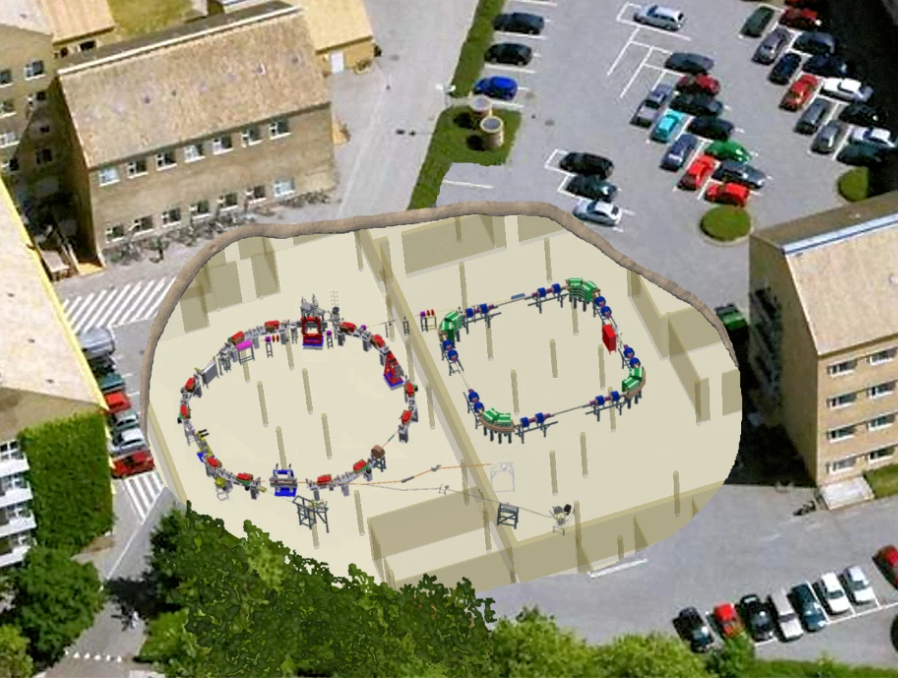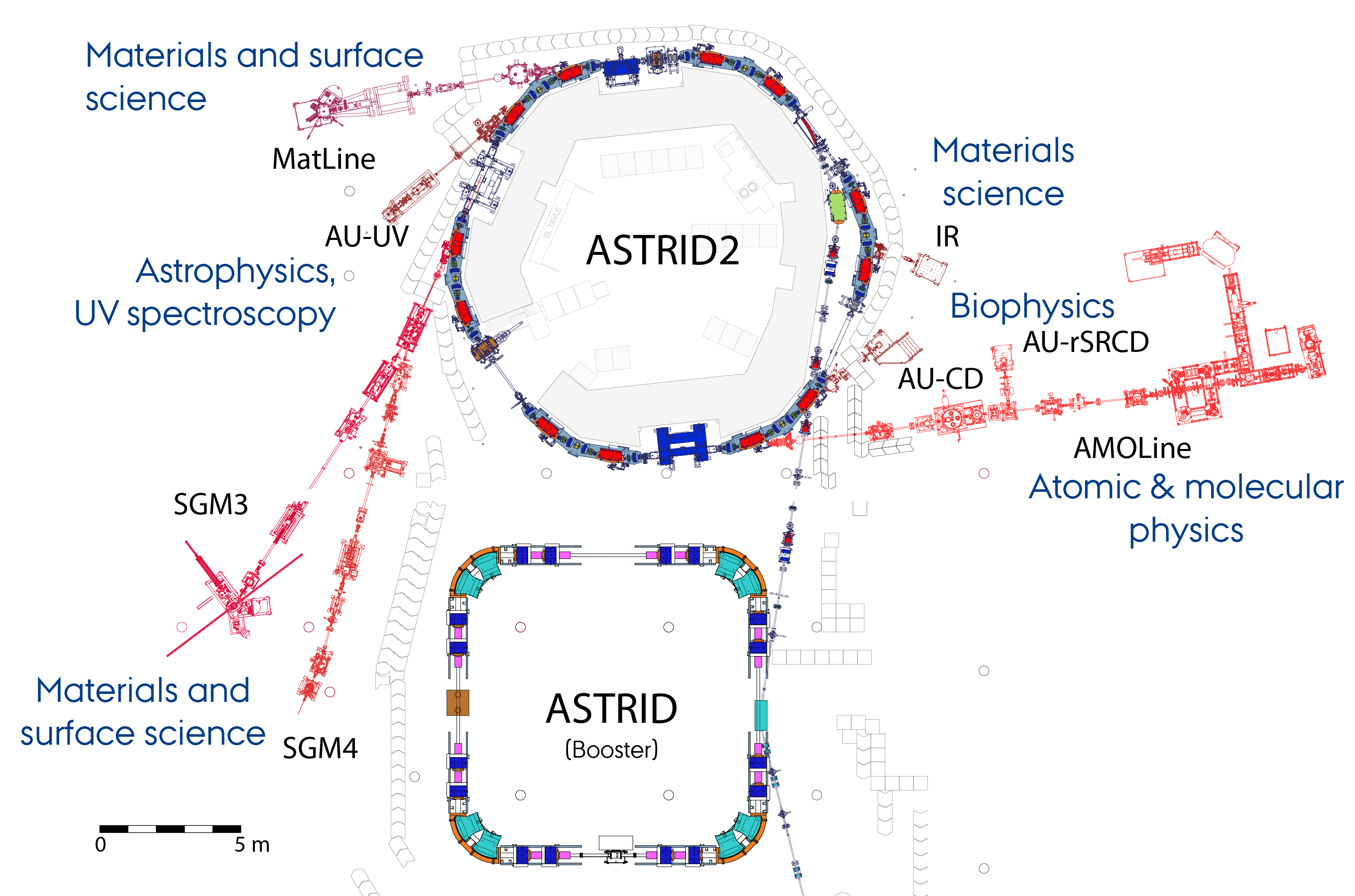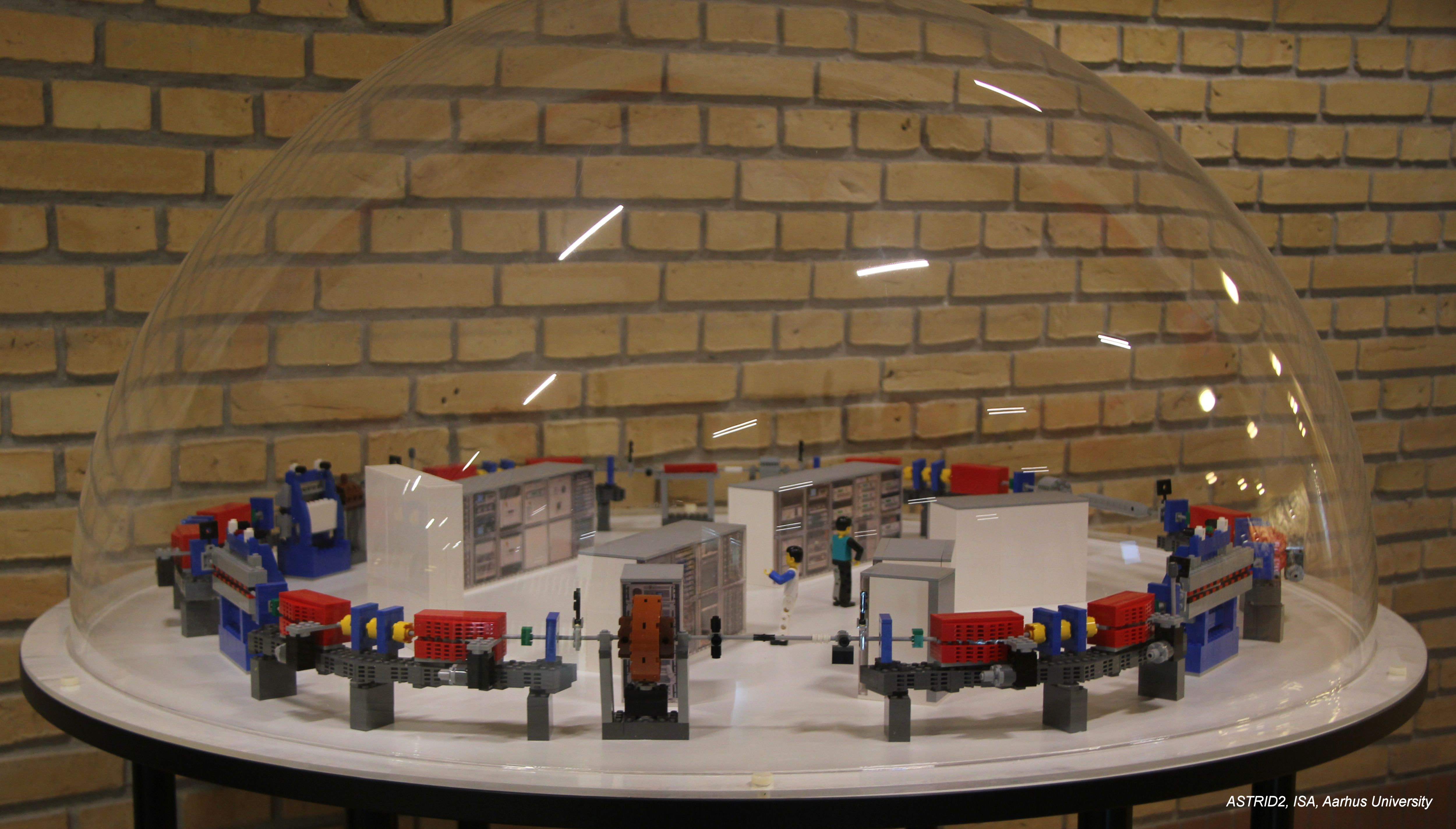Scientific Highlight - August
ASTRID2 is the successor to ASTRID, which also happens to be a Scandinavian or Old Norse name, popularly translated as 'Divinely Beautiful'. But what exactly is ASTRID2, and why is it so exciting?



Underground, nestled between the physics and chemistry departments of Aarhus University, lies a treasure trove of scientific discoveries - a research laboratory called ASTRID2. Here, extremely fast-circulating electrons produce a bright light called synchrotron light, which is used for many experiments ranging from research in planetary chemistry to investigating the properties of quantum materials, metals, nanowires, and biological molecules. Recently, an article published in The European Physics Journal Plus highlighted the groundbreaking research and the future potential of ASTRID2.
ASTRID2 is a synchrotron light source, a 45.7-metre ring of magnets storing electrons at 580 MeV. But what exactly does that mean? Here's how it works: electrons are accelerated through sequences of magnets until they reach almost the speed of light using ASTRID. These electrons are transferred and stored in ASTRID2, circulating the ring so fast that they revolve around it 6 million times a second. The electrons are "bent" around corners using powerful magnets and as they do, they release photons - little bits of all kinds of light. The synchrotron light produced by ASTRID2 is orders of magnitude times brighter than light from conventional sources and even a million times brighter than the sun! The light produced ranges in energy from the soft X-ray region to the infrared (IR), being a particularly good source for ultra-violet (UV) light. Researchers can filter out specific energies of light for their experiments, providing them with more information and various techniques to explore their samples.
The synchrotron light from ASTRID2 enables groundbreaking scientific research. Scientists can examine drug action, explore new means of fabricating electronics, and investigate the properties of exotic metals, nanowires, and biological molecules. Both ASTRID and ASTRID2 attracts numerous scientists from Denmark and abroad. Moreover, ASTRID2 creates an exciting high-tech environment for young people, fostering educational potential and inspiring the next generation of scientists. The collaboration between Danish industry and the ASTRID2 team has also led to advancements in cancer therapy, one of the great medical breakthroughs anticipated in the coming decade.
Light produced by the ASTRID2 ring is collected, focused, and transported to the experiments using beam lines. These experiments offer unique capabilities for studying various materials and phenomena. For example, MatLine studies materials and surfaces that are of interest in, for example, catalysis processes. The SGM3 and SGM4 beam lines can explore the electronic structure of different materials like silicon layers and graphene. The AU-UV beam line helps researchers see how light is absorbed by different substances of e.g. astrochemical relevance, and the AU-CD beam line specializes in studying how bio-molecules fold with intricate twists and turns. Lastly, the AMOLine serves as a playground for scientists eager to explore atoms, clusters, and molecules.
In the coming years, exciting upgrades and improvements to the equipment are also on the horizon, promising even more remarkable scientific discoveries.
Read the paper here and see an animation to learn more about how ASTRID2 works.
A bit of fun trivia: At the entrance of the physics department, you can find a realistic model of ASTRID2 made with about 2500 LEGO pieces and is on a scale of approximately 1:15. So next time you visit IFA, don’t forget to have a look at the LEGO model.
References:
- ASTRID
- This is how ASTRID2 works
- ASTRID2 – the ultimate synchrotron radiation source - ISA
- While you were gone ASTRID and ASTRID2 have had a little sister
- ASTRID2 LEGO Model
- Research at ISA
- Picture source: Status and strategy at ISA, centre for storage ring facilities, Aarhus University, Denmark and Nykola Jones.
This article is brought in collaboration with Science Melting Pot
